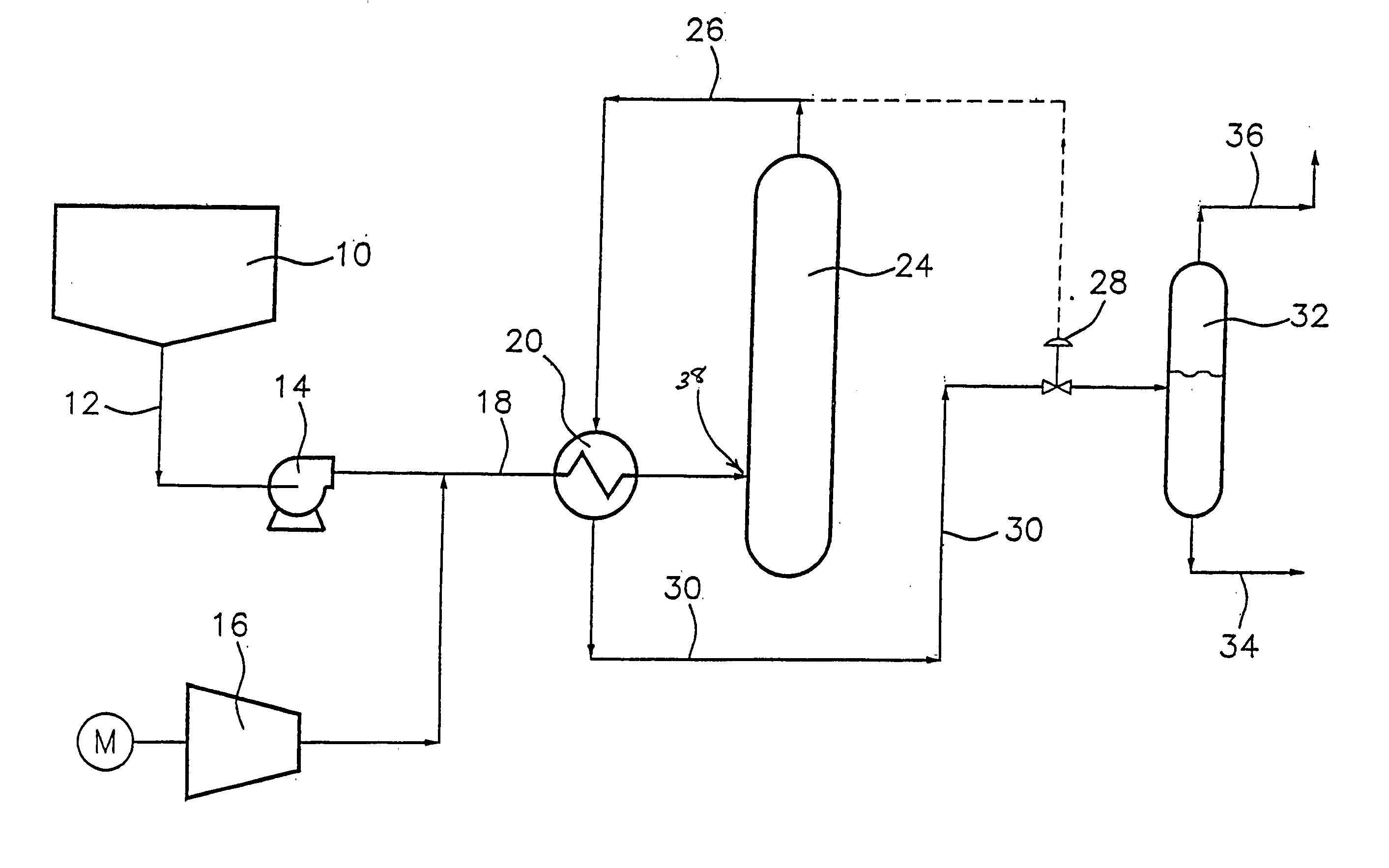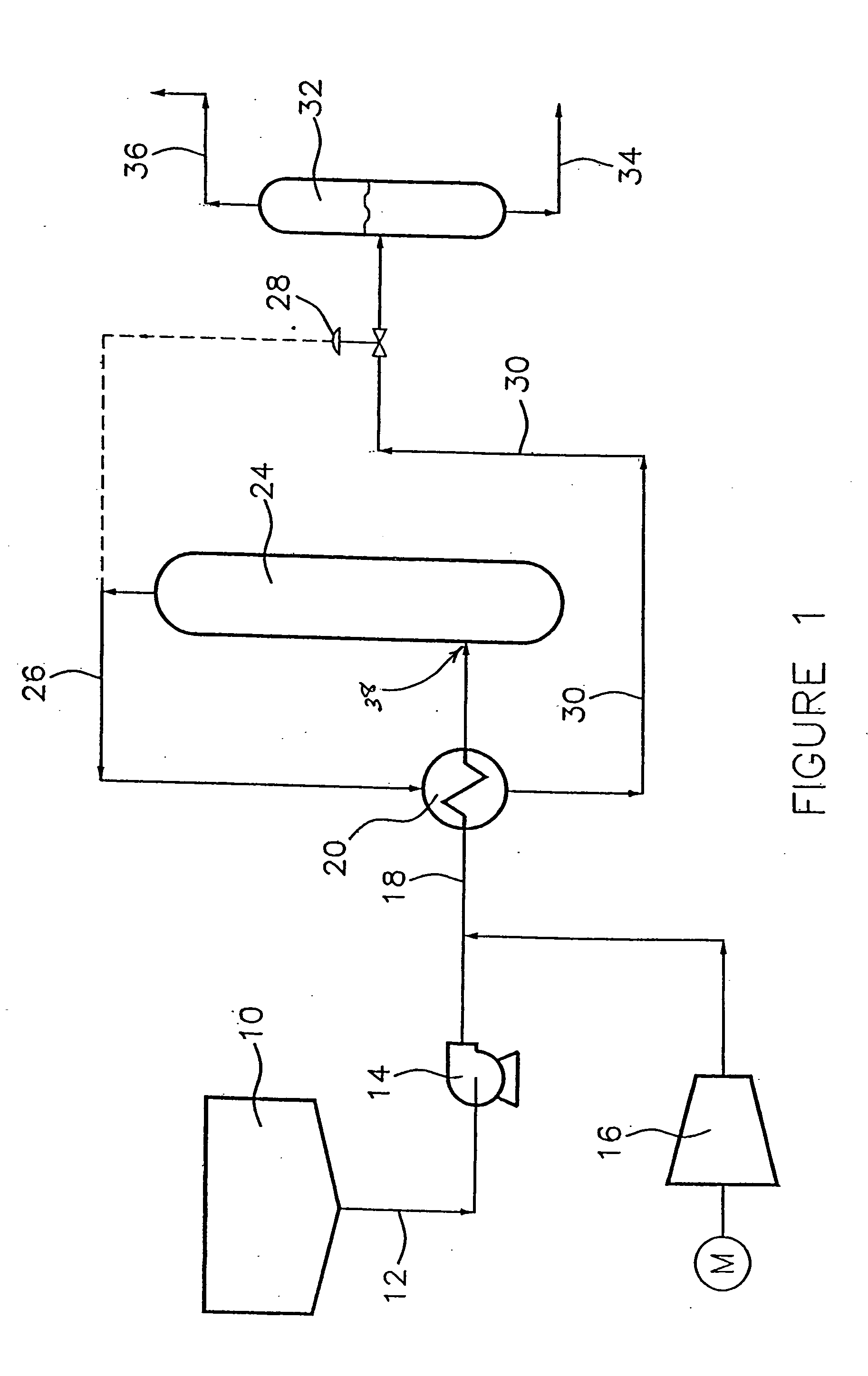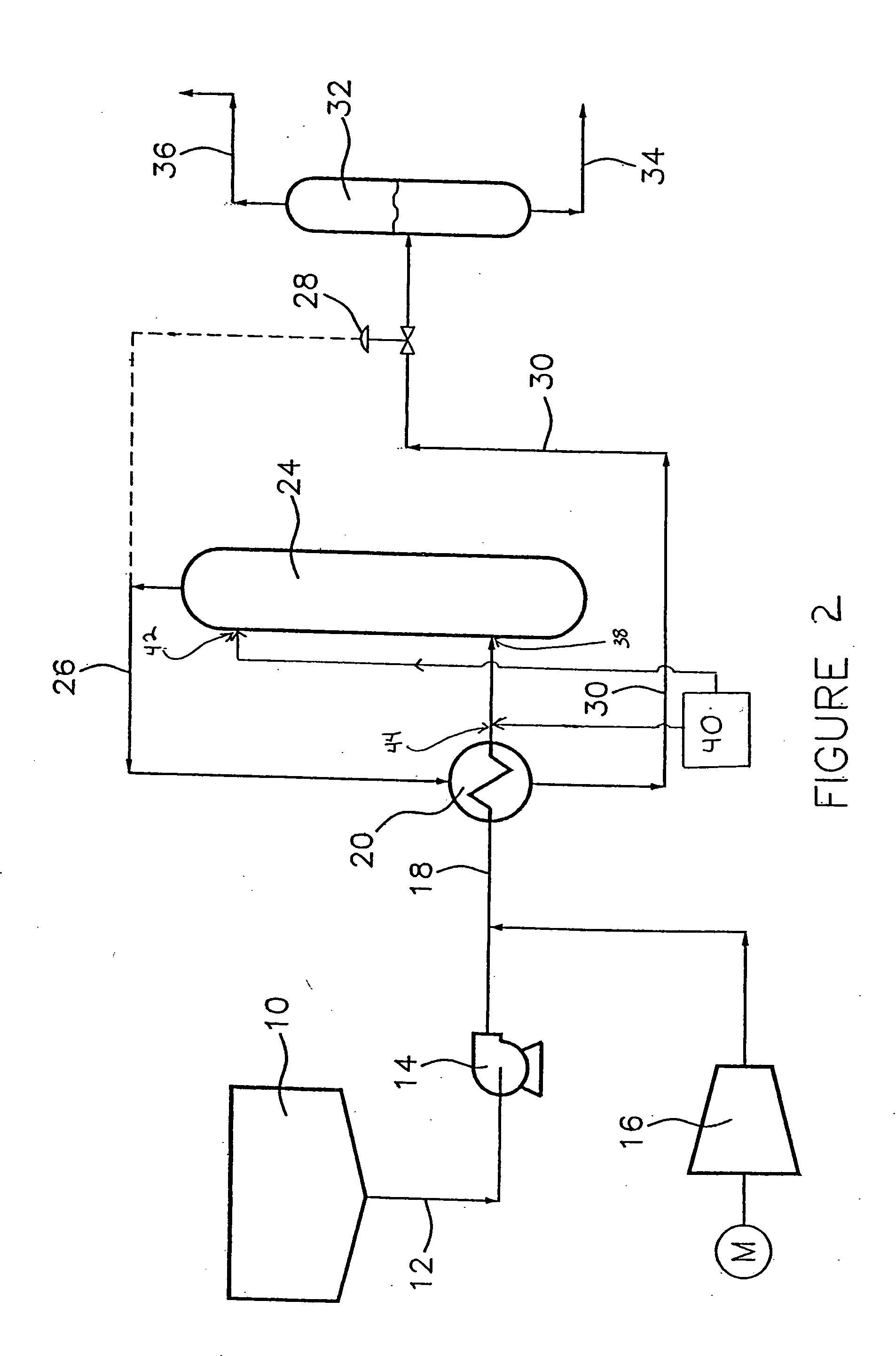Wet oxidation process and system
a technology of wet oxidation and process, applied in the direction of oxidation treatment of sludge, water/sewage treatment by oxidation, oxygen-containing compound preparation, etc., can solve the problem that the complete mineralization of all pollutants in wastewater by wet oxidation may only be achieved with great difficulty
- Summary
- Abstract
- Description
- Claims
- Application Information
AI Technical Summary
Benefits of technology
Problems solved by technology
Method used
Image
Examples
example i
[0036] Dimethyl methylphosphonate, H3C—PO(OCH3)2, was used as a simulant for compounds containing a carbon-phosphorus bond such as H3C—POF2. A solution of dimethyl methylphosphonate (DMMP) in distilled water was prepared. The solution contained 20,000 mg / l DMMP and had a pH of 4.16. In tests No. 3 and 4, the solution pH was adjusted to 14 with sodium hydroxide. A sample of the solution was placed in an autoclave and pressurized with air to provide sufficient oxygen to oxidize all the oxygen demand of the solution, as well as sufficient overpressure to maintain water in the liquid phase during heating. The autoclave was heated to temperature for one hour, then cooled, and the gas and liquid phases analyzed with the results shown in Table I.
TABLE IDMMP Oxidation At Temperature For 1 HourTest No.FEED1234Temp., ° C.—260280260280pH4.16 / 14.01.961.9713.4311.87DMMP,20,000————mg / LMPA, mg / L13,10012,40012,70011,300Ortho-P,66134394654mg / LNPOC, mg / L53104602455545053870
[0037] After wet oxidatio...
example ii
[0038] To further investigate the destruction of carbon-phosphorus bonds, methylphosphonic acid, H3C—PO(OH)2, was used as a simulant compound. A solution of methylphosphonic acid (MPA) in distilled water was prepared. The solution contained 5,000 mg / l MPA and had a pH of 1.7 A sample of the solution was placed in an autoclave and pressurized with air to provide sufficient oxygen to oxidize all the oxygen demand of the solution, as well as sufficient overpressure to maintain water in the liquid phase during heating. The autoclave was heated to 320° C. for selected time periods, then it was cooled and the liquid phase analyzed with the results shown in Table II.
TABLE IIMPA Oxidation At 320° C.Test No.FEED567Time, minutes—60180360pH1.71.92.161.45MPA, mg / L5,000—2,300—Organic-P, mg / L1,8001,240—Ortho-P, mg / L4906891,330Total P, mg / L1,8001,740—1,340
[0039] Methyl phosphonic acid was only partially destroyed after one hour at temperature, as indicated by the small fraction of ortho phosphat...
example iii
[0040] To further investigate the effect of high pH on the destruction of carbon-phosphorus bonds of Examples I and II, a solution of methylphosphonic acid (MPA) in distilled water was prepared. The solution contained 5,000 mg / l MPA and the pH of the solution adjusted to 12.8 with sodium hydroxide. A sample of the solution was placed in an autoclave and pressurized with air to provide sufficient oxygen to oxidize all the oxygen demand of the solution, as well as sufficient overpressure to maintain water in the liquid phase during heating. The autoclave was heated to temperature for selected time periods, then cooled and the liquid phase analyzed with the results shown in Table III.
TABLE IIIMPA Oxidation at pH 12.8Test No.FEED891011Time, minutes—606060360Temp., ° C.—280300320320pH12.812.412.311.49.2MPA, mg / L5,0004,0003,1201,780125Ortho-P,2.01724719321,350mg / L
[0041] MPA was analyzed using ion chromatography. The MPA analyses and the distribution of the phosphorus at the various temp...
PUM
| Property | Measurement | Unit |
|---|---|---|
| temperature | aaaaa | aaaaa |
| temperature | aaaaa | aaaaa |
| temperature | aaaaa | aaaaa |
Abstract
Description
Claims
Application Information
 Login to View More
Login to View More - R&D
- Intellectual Property
- Life Sciences
- Materials
- Tech Scout
- Unparalleled Data Quality
- Higher Quality Content
- 60% Fewer Hallucinations
Browse by: Latest US Patents, China's latest patents, Technical Efficacy Thesaurus, Application Domain, Technology Topic, Popular Technical Reports.
© 2025 PatSnap. All rights reserved.Legal|Privacy policy|Modern Slavery Act Transparency Statement|Sitemap|About US| Contact US: help@patsnap.com



